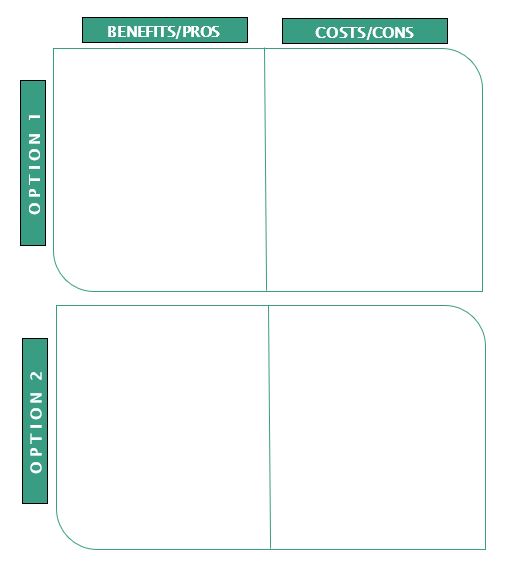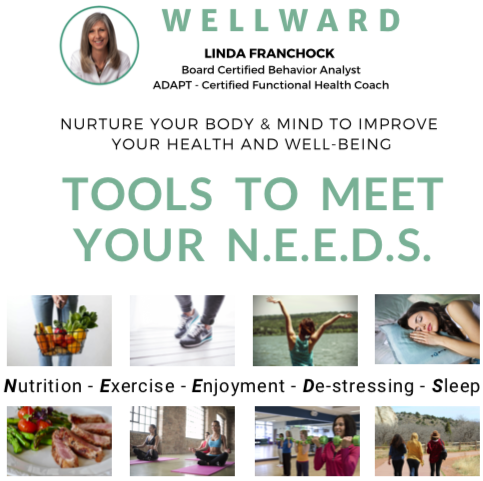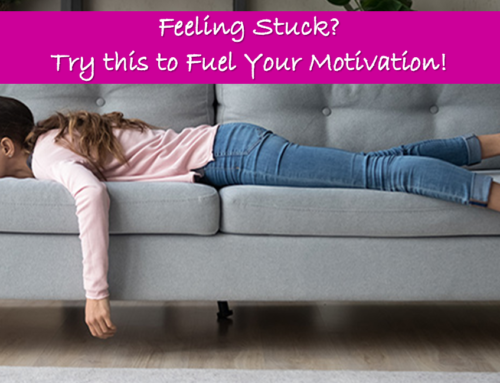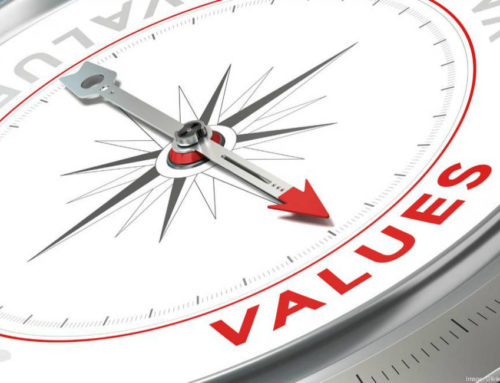We all get sucked into the riptide of indecision. No matter how hard you persist, finding a resolution seems forever hopeless. “Should I or shouldn’t I.” “This way or that way.” “Go or stay.”
The longer the process goes on, the more exhausting and miserable it becomes mentally and physically.
By its definition, a dilemma is a situation where you make a difficult decision between multiple and various choices, especially equally undesirable ones. Therefore, if there were an easy or “perfect” decision, you would have made it already. A dilemma wouldn’t exist.
So, the fact is, there is no “perfect” decision which is why you have a dilemma! You can stop trying to make one now.
When faced with a major dilemma, hard decision or tough choice in life, you’re not likely to resolve it overnight. Depending on the problem, it may take days, weeks, months, or even years to arrive at a decision. Wrestling with your hard decisions as you desperately try to figure out what to do typically increases anxiety and stress levels. This wrestling can distract you causing you to miss out on the present moments in your life.
So, what can help?
Strategies to Bring Clarity to Hard Decisions to Help Determine a Course of Action
Adapted from Russ Harris – Dilemmas, Hard Decisions & Tough Choices
1. Open Up To The Reality That Dilemmas, Hard Decisions, And Tough Choices Typically Do Not Resolve Quickly
As stated above, it can take time to resolve a difficult decision. It likely won’t happen overnight. Opening up with understanding and self-compassion around this reality can reduce your anxiety and provide some clarity in the decision-making process.
Set a realistic time frame for making a decision if it’s helpful or critical. For example, you decide for the next five days you’ll continue to smoke. Acknowledge that decision for the next five days. At the end of this time, reassess your decision and make another decision. The time frame you establish is up to you (two hours, three days, one week, two months, etc.).
Other decisions that might follow could be deciding what values guide this area of your life. Sketching out what your life can be like as a non-smoker. You could learn about alternatives to quit smoking. Maybe you want to determine or prepare steps that support you in an intervention, seek medical advice, or get advice from others who’ve successfully quit smoking, etc.
2. Recognize That Not Deciding Is Deciding
When you decide something, you are choosing from several different alternatives. So, if you don’t make a decision regarding your dilemma, you are, in fact, choosing the alternative to keep things in their current state. For example, each day you don’t quit smoking, you’ve decided to keep smoking, even if just for another day. Of all the alternatives you have, you’ve decided to continue smoking.
3. Write Down A List Of All The Benefits And All The Costs For Each Option
Take time to reflect on the issue facing you. One way to do this is to write down the cost and benefits (pros/cons) of each option. Writing things down is a different experience compared to thinking it through in your head or talking with someone. The process of writing things down can create a tangible visual that can help you decide. Before doing this, be sure you’ve gathered enough relevant information from reliable sources. This will support you in making an informed decision. (see the How To Make A Difficult Decision Worksheet on the last page)
As you reflect on your costs and benefits, imagine how the costs and the benefits of the different decisions would affect life. What would be different? What would help you live in service of your values or how you want to be as a person? What makes sense, given the current circumstances? What’s possible? What support would help in following through with your decision?
As you do this exercise, reflect and stay focused. Avoid multi-tasking. Remove distractions like your phone, TV, other people (unless it’s a partner decision), etc. Find a quiet place where you can sit and do nothing else but reflect. You can set a specific amount of time for this exercise of 15 mins and longer. You can come back to it, reassess, and add things as you continue to reflect.
4. Recognize It’s Normal To Wonder About Your Decision And To Experience Uncomfortable Thoughts And Feelings Around The Decision-Making Process
As I stated earlier, there is no perfect solution to a dilemma, hard decision, or tough choice, as that’s why they exist. This fact creates some anxiety, stress and thoughts of doubt. So, if you’re waiting to “feel better” before you made your decision, you may be waiting for an eternity. Whatever decision you make, you’re likely to feel anxious about it, that’s normal! And even after you have made your decision, your mind will try to remind you that it was not the right one. Our minds do that, also normal!
5. Notice And Name Your Unhelpful Thoughts And Stories
Your mind will draw you into your dilemma repeatedly and usually with unhelpful comments and stories. If you find this happening (and you will) remember that if ruminating, worrying, and buying into these stories about this dilemma was helpful, it would have already resulted in a solution.
Your anxious feelings are normal when making tough decisions. They will definitely occur again and again and again. It’s what everybody feels in challenging situations with uncertain outcomes. The UNhooking strategy below can help in opening up and making room for these unhelpful stories, thoughts, and feelings and help to reduce your anxiety. Practicing it over and over again will make it a beneficial habit that will support you in many areas of life.
UNHOOKING STRATEGY
- Notice when unhelpful stories, thoughts, and feelings show up and start to hook you. When you’re hooked you’ll leave the present moment. Your mind will take over repeating your unhelpful thoughts and stories. You may begin to feel increasingly anxious, uneasy, worried, fearful, etc.
- Remind yourself that these unhelpful thoughts and stories are not useful in making your decision.
- Name the unhelpful thoughts and stories your mind is providing. For example, “there’s the ole “quit or don’t quit” story again. There’s the “You’re not capable of making a good decision” story.” Your mind will have an endless supply of competing and unhelpful comments to hook you.
- Allow the unhelpful stories and thoughts to come, go, or stay without judgment, without labeling them right or wrong, or good or bad. Just let them be there. This practice will eliminate the struggle and reduce the anxiety the struggle creates. It will UNhook you!
- Thank your mind for the input, just like you would thank an overly-helpful friend. Say, “Thanks for the input mind.” “I know you’re just trying to help, but I’ve got this covered.”
- Acknowledge and name your feelings (anxiety, fear, worry, etc.). Say, “Here’s anxiety.” “I’m noticing feelings of fear.” Remind yourself, “This is normal.” “Everybody feels some anxiety in challenging situations, especially when they don’t know what will happen.”
- Return to the present moment by getting out of your head and by getting back into your body. Do some meaningful action. Something in service of how you want to live and be as a person even if doing so feels a bit uncomfortable. Your mind will work hard to steer you in the opposite and not so helpful direction. But regardless of what your mind is telling you and how you are feeling, you can still move in a meaningful direction. Even if it’s a tiny step.
You can use this same strategy for thoughts and feelings that occur after you’ve made your decision. Your mind will show up then too casting doubt and trying to hook you again. It’s just doing its job, but it’s not always helpful. Use the strategy to UNhook and do something meaningful.
6. Practice Self-Compassion A Lot!
Remind yourself you are human and not an analytical machine spitting out solutions. This is a difficult situation. If it were easy, you would not have a dilemma in the first place! Difficult situations carry with them strong and painful emotions. Your mind will jump in with unhelpful thoughts and stories. It’s what the mind does. But it’s not always helpful.
Be gentle, kind, and loving toward yourself. Talk to yourself like you would talk with a friend or a child having to make a difficult decision. Your mind will tell you that you aren’t worthy of self-compassion, kind words, or care and that it’s dumb and not for you. Use the above strategy to UNhook from all of that unhelpful self-judgmental mind-babble. Your mind will also tell you that the above strategy is stupid and doesn’t feel comfortable but do it anyway. Try it a few times before you decide.
Self-compassion involves doing plenty of kind, caring, nurturing, considerate things for yourself, things that soothe, nurture, or support you in this time of difficulty. Make a list of things that you enjoy and make time for these things. Consider things like spending time with friends, caring for your body, treating yourself to a fun or creative activity, doing something outdoors, reading, or simply close your eyes and relax in a quiet space for a few minutes.
Cycle through these tips and strategies daily. As you do, you’ll notice one of three things happen over time…
- One of your options becomes more appealing than another.
- One of your options goes away and is no longer possible or available.
- Your dilemma is still unresolved.
- If you experience either #1 or #2, a solution occurred, and your dilemma is gone.
- If you experience #3, well okay. At least, you’ve learned how to get through your day living mindfully, doing what’s meaningful, and being the person you want to be. That’s better than being sucked into the riptide of anxious indecision.
DIFFICULT DECISIONS – COSTS AND BENEFITS WORKSHEET
List the benefits/pros and costs/cons of optional one. Then do the same for option two. If you have more options print or copy another template using additional option numbers. Reflect on your responses. Use this worksheet along with the strategies from the article How to Make A Difficult Decision to support this process as you determine a course of action.

Over to you…
What’s standing in the way of your decision?
How long have you been trying to make your decision?
What are the cost and benefits of making a decision now or later?
Wishing you Wellward! Linda

Sign up today to receive the “Tools to Meet Your N.E.E.D.S.” ebook, which contains Linda’s favorite products and practices for wellbeing.
You’ll also get notified about new resources and learning opportunities from Wellward.
Discover over 200 resources to help you reach optimal health and wellness. Explore links, apps, books, articles, podcasts, videos and more!





